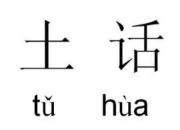气候变化导致古树生长竞赛的英语美文
时间:2021-08-31One of the consequences of a warming world is that high mountain habitats, which used to be too chilly for trees, are heating up。 "There is now newly available real estate above what we call tree line—the sort of literal line in the sand above which trees can’t grow because it’s too cold。 But now it’s not。"
全球变暖的其中一个后果是,对树木来说曾经过于寒冷的高山环境正在逐渐升温。“现在,在我们称为“林木线”的上方出现了新的可用生长空间——这种线类似于分界线,由于过于寒冷,树木在该线之上无法生长。但是,现在情况已经改变。”
Brian Smithers is an ecologist at U。C。 Davis。 He compares this slow—moving migration to land—grabs back in pioneer times。 "You know, they fired the guns and all the settlers made a mad dash to claim their stake。 It’s that, but if everybody were crawling on their bellies or something like that instead。"
布莱恩史密瑟斯是加州大学戴维斯分校的生态学家。他将这种缓慢迁移与开拓时期的土地掠夺进行了比较。“你知道,他们开了火,当时所有开拓者都在疯狂地占领地盘。事实就是这样,但是如果所有人都匍匐前进,或是替换成会爬的东西会怎么样?”
Smithers is studying this upslope race among bristlecone pines。 These trees can live for more than 5,000 years—making them the oldest individual organisms on Earth。 Many of them eke out a living in dry, rocky soils, on windblown ridgelines around 11,000 feet, in eastern California and Nevada。 "They look like the worst bonsai tree imaginable。 They just look gnarled and twisted, something that looks like it’s taken a beating for 5,000 years and still living。"
史密瑟斯正在研究狐尾松之间的上升竞赛。这些树的寿命可超过5000年,这使它们成为地球上最古老的生物个体。在加州东部和内华达州干燥的石质土以及约1。1万英尺高的风蚀山脊线上,许多狐尾松在勉强度日。“它们看起来像是你能想得到的最糟糕的盆景树。这些树有很多节瘤,而且形状扭曲,看上去像过去5000年一直在挨打,但依然存活着。”











